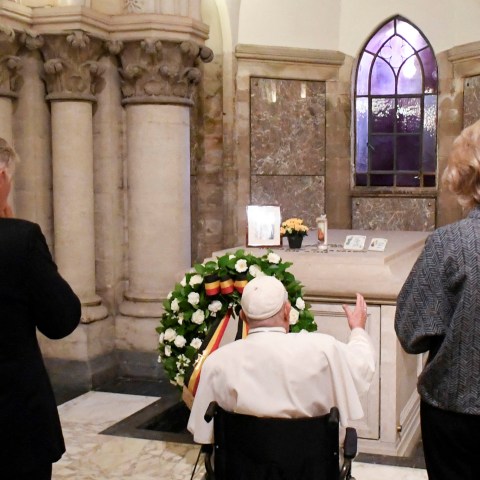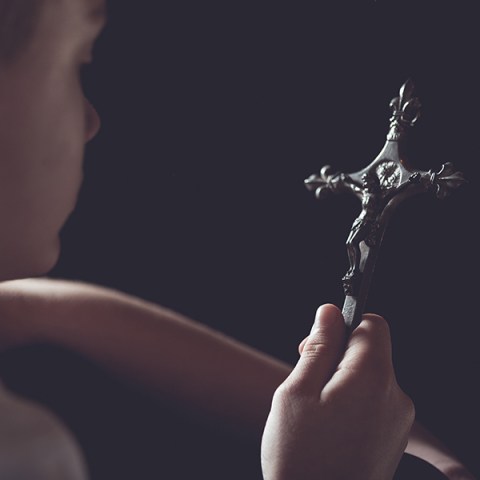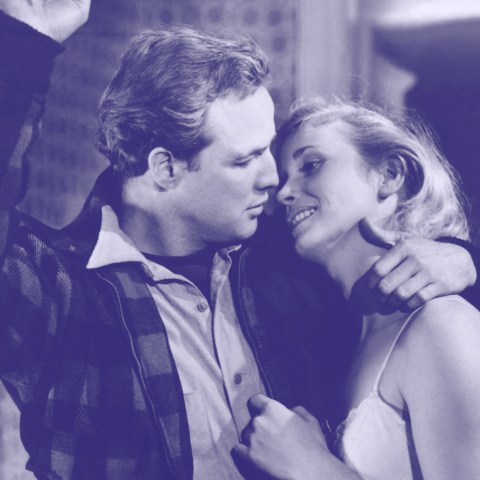The Church gives us this official daily prayer to provide rhythm to our day and sanctify our time. The first Christians were “devoted to prayer” (Act 2:42). Later on, this daily and continues prayer underwent transformations, but its principle has always remained the same: it’s a response to the exhortation of Christ for continual prayer of the Church according to the Word of God (especially the Psalms).
The Second Vatican Council reiterated the duty of those who are ordained to pray the Liturgy of the Hours. It also recommended that all worshipers pray “with the clergy, with the others and alone”(Sacrosanctum Concilium, #100). The Liturgy of the Hours has also been “destined to be the prayer for all the people of God” (Catechism of the Catholic Church § 1175). It is in response to this wish expressed by the Council that the magazine Magnificat was founded, with the encouragement of St. John Paul II. The publication has helped to make the treasures of the Liturgy of the Hours available to the laity, adapting it to their family and professional lifestyles.
What is the Liturgy of the Hours?
The Liturgy of the Hours includes morning praises, or Lauds, when people dedicate their day to God, and the act of grace known as Vespers in the evening. The prayers in the middle of the day are Tierce, Sext, and Nones (sometimes combined as Midday Prayer), and Compline or Night Prayer is said before retiring for the night. The Liturgy of the Hours also includes the Office of Readings, with texts from Holy Scripture and from Church Fathers, which can be read any time during the day. This daily cycle spans through a period of four weeks. It is combined with the annual cycle of liturgies – Advent, Christmas, Sundays, Lent, Easter, the mystical celebrations of Christ’s life, and of the Virgin Mary and the saints.
Pauses and silences make up an integral part of the prayer, and highlight the resonance of the voice of the Holy Spirit in our hearts. Most of these elements vary depending on the days and seasons. A certain amount of dexterity in turning pages is required to master the Liturgy of the Hours when using the printed books; several apps are available for e-reading.
Why practice the Liturgy of the Hours?
It is the official prayer of the whole Church, the “voice of the Bride addressing her Husband” (Vatican II). In joining in it, we pace our days on those of the Church, participate in its prayers of praise and intercession, become close to all those for whom this prayer is the office. The Liturgy of the Hours is a way in which the Holy Spirit teaches us, especially through the Psalms. In reciting them we are able to converse with God, to respond to Him using his own words, his Word.
These songs could be some 1500 years old, but they speak to us and of us. They are as modern and as real as what we could read in a newspaper. The joys, the tragedies, the life of struggle, the despair, the supplications, the intercessions and most importantly the praises and the acts of grace – a whole range ways in which mankind relates to God, to one another and to themselves can be found in Psalms. There is no danger here to succumb to a watered-down or sentimental experience! Thanks to the Psalms, life is transformed into prayer and the prayer becomes the school of life (and through praises even a school of eternal life).
More importantly, never oppose it to personal prayer and an oration
Jesus tells us, “But when you pray, retire to your room, close the door and pray to your Father, who is unseen” (Matt, 6:6), or “For where two or three gather in my name, there am I with them” (Matt, 18:20). These two ways of praying elevate and sustain each other to transfigure our days in the light of Christ.
Should this form of prayer recommended by the Church become a moral obligation for all, including families? No. One needs to take into account their vocation and circumstances. Reciting the Rosary is also a form of family prayer, which is highly recommended by the Church; other ways of praying can bear wonderful fruit for the whole household, too. However, if a religious community or a parish near you holds the Liturgy of the Hours, why not join in when you can?
How do we read the Psalms?
The best thing is, of course, to sing the Psalms – because these are songs (some even contain the instructions for melody and instruments). Difficulties should not be underestimated, however, even after you have mastered it. But every Christian needs to learn how to read the Psalms and how to persevere.
The Psalms that often speak of struggle can more often than not transform into one! For a number of us, including clerics, the divine office sung or recited individually becomes something of a feat. But in return, what a joy it is to experience the mercy of God day after day and feel “surrounded by this immense flock of witnesses” (He 12:1) who have been sustained by these prayers throughout the ages. And sometimes, when we are not particularly looking for it, a verse of a Psalm can suddenly captivate us, as if we were hearing it for the first time, as if it was written just for us. It moves us, and perhaps transforms our life.
More importantly our intimacy with Christ grows. He, who recited and sang these Psalms, loved to wake up before sunrise for the morning prayer (Mk 1:35) and sometimes prolonged the evening prayer well into the night (Luke 6:20). Our heart is in his heart, our experience blends with His and allows us to say: “I no longer live, but Christ lives in me.” (Gal 2:20)
Didier Rance

Read more:
What is the Liturgy of the Hours?

Read more:
How to get more than you expect from praying the Psalms








